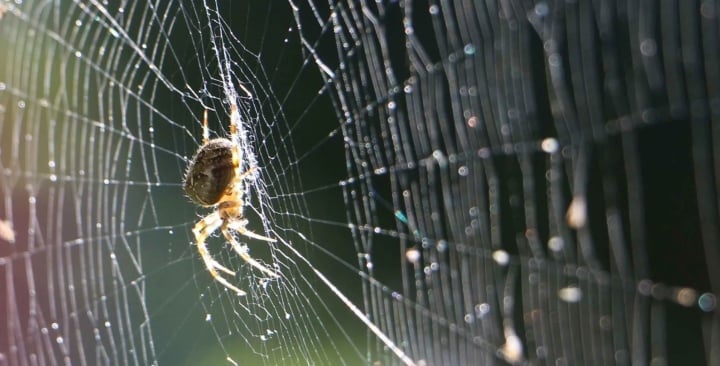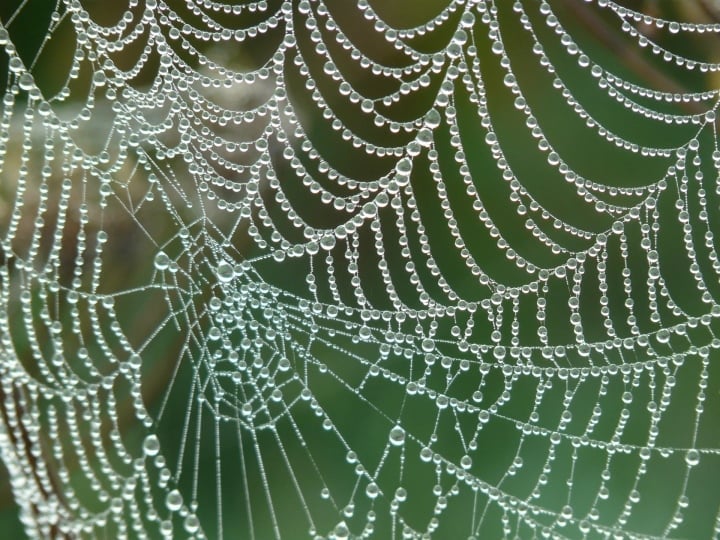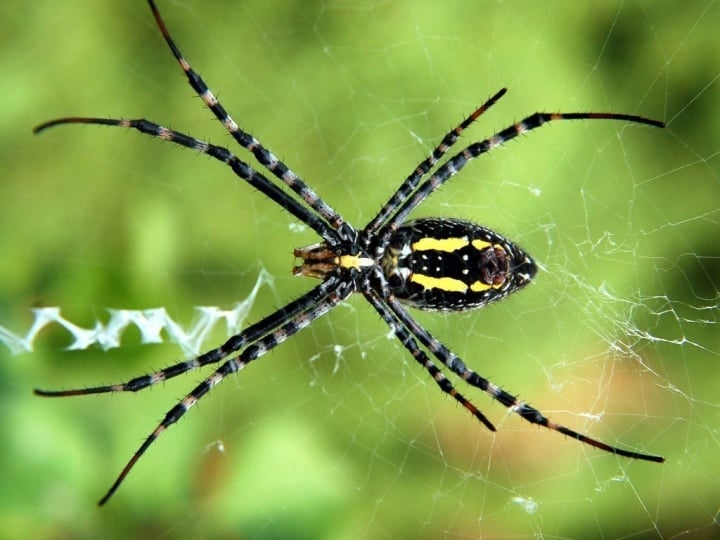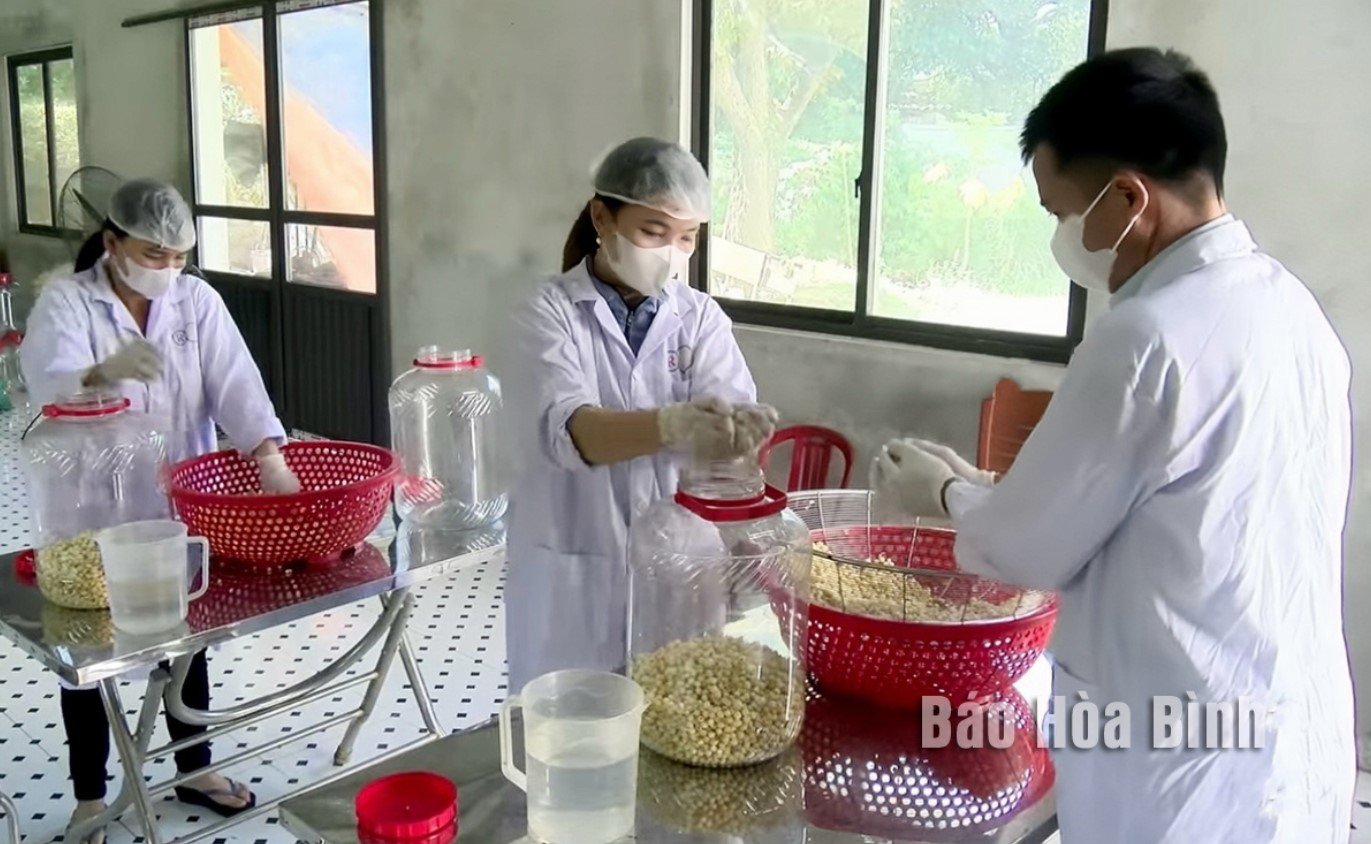Spider silk has long been known as the most incredibly durable natural material. There are even spider species that produce silk that is five times stronger than steel, such as the brown reclusa spider. But one must also wonder why spider silk looks so fragile but has such incredible durability. This is also a question that has been puzzling scientists, and they have only recently found the answer.

Spider silk is very strong, even stronger than steel wire.
Spider silk has a unique structure
Spider silk is a protein fiber that spiders produce and spin. They use it to create webs to catch prey or to protect their eggs and baby spiders. The strong structure of these silk fibers allows spiders to capture prey many times their size.
Recently, researchers at the College of William and Mary’s School of Applied Science used atomic force microscopy to observe the microscopic structure of the silk fibers that brown recluse spiders create to protect their eggs and catch prey. They discovered that each spider silk strand, thinner than a human hair, is actually made up of thousands of different nanofibers, only 20 nm in diameter and about 1 μm long.
These nanofibers may not seem long, but they can stretch more than 50 times their original size. This structure makes spider silk very tough and strong, with strength and durability up to 5 times greater than a steel bar of the same size.

Spider silk can stretch up to 50 times its original size.
Previously, scientists around the world had claimed that spider silk was made from nanofibers but there was no solid evidence until this discovery was published in the scientific journal ACS Macro Letters (USA).
That's because the brown recluse's silk is made up of nanofibers arranged in flat sheets rather than in cylinders like most other spiders. This makes it easier for scientists to observe them using atomic force microscopy.
This finding adds to research the team conducted in 2017, demonstrating how brown recluse spiders strengthen their silk using a special looping technique. Like a tiny sewing machine, brown recluse spiders weave about 20 nanofibers for every millimeter of silk they spin, strengthening the silk so it doesn’t break.
A spider silk thread is "sacrificed" to maintain the overall structure.
Molecular mechanics experts have examined the webs of different spider species, including the European garden spider Araneus diadematus and the web-weaving spider Nephila clavipes. By studying silk at the molecular level, they found that they could explain the strength of spider webs.
Dr. Buehler explains that individual silk fibers can be “sacrificed” to maintain the overall structure. “When a silk fiber is pulled, its molecular structure stretches as the force increases, stretching the fiber,” he says.

Spider silk only breaks when it wants to maintain its overall structure.
This change occurs in four stages: in the first stage, the entire filament is stretched; then there is a relaxation stage where the proteins “unfold.” In the third stage, the filament undergoes a stiff phase that absorbs the greatest amount of force. The final stage before the filament breaks is likened by Buehler to tearing off a piece of tape; it also takes a large force to break the filament because the proteins are held together by sticky hydrogen bonds.
“The strength of a spider web is not only due to the strength of the silk thread, but also to how its mechanical properties change when pulled,” said Dr. Buehler.
Tuyet Anh (Source: Synthesis)
Useful
Emotion
Creative
Unique
Wrath
Source






































![[Photo] Prime Minister Pham Minh Chinh chairs Government Conference with localities on economic growth](https://vstatic.vietnam.vn/vietnam/resource/IMAGE/2025/2/21/f34583484f2643a2a2b72168a0d64baa)


























































Comment (0)